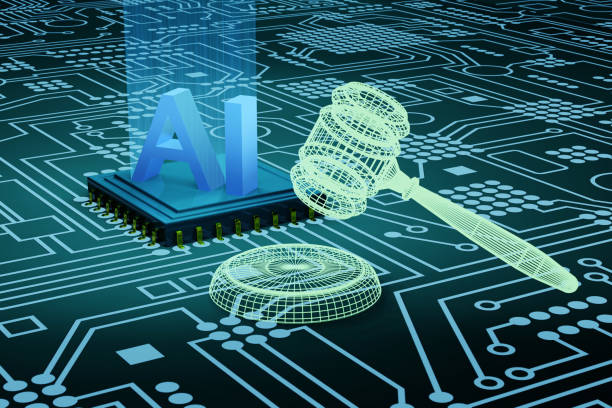Global Efforts Intensify for Balanced AI Regulation
Global efforts intensify to balance AI innovation with regulation, addressing privacy, misinformation, and economic impacts.

The AI Regulation Sweet Spot: Balancing Innovation and Governance
The debate over artificial intelligence (AI) regulation has reached a critical juncture, with policymakers and industry leaders worldwide grappling with the challenge of finding the "sweet spot" between fostering innovation and ensuring public safety. This delicate balance is crucial, as AI technologies are increasingly integrated into various sectors, from healthcare and finance to education and transportation. The push for regulation is driven by concerns over AI's potential risks, including privacy violations, misinformation, and job displacement.
The Rise of AI Regulation
In recent years, there has been a significant increase in legislative efforts to regulate AI. According to the Stanford University's 2025 AI Index, mentions of AI in legislation have risen by 21.3% across 75 countries since 2023, marking a ninefold increase since 2016. In the United States, federal agencies introduced 59 AI-related regulations in 2024, more than double the number in 2023. Additionally, nearly 700 AI-related bills were introduced across 45 states in 2024, up from 191 in 2023.
Key Players and Initiatives
-
Meta's Super PAC: Meta has launched a super Political Action Committee (PAC) called the American Technology Excellence Project to fight what it describes as excessive state-level AI and tech regulations. The company plans to invest tens of millions of dollars to support candidates who back innovation-friendly policies.
-
European AI Act: The European Union has adopted the AI Act, which bans practices like social scoring and imposes rigorous obligations on high-risk applications such as biometric surveillance and job-screening algorithms. This provides a stark contrast to the U.S. approach, which relies on voluntary commitments from leading AI firms.
-
U.S. Federal Initiatives: The U.S. federal government has introduced several initiatives to guide AI development. These include the NIST AI Risk Management Framework and White House executive orders that set expectations for federal procurement and agency use of AI, though they do not impose binding requirements on private actors.
Challenges and Controversies
The regulation of AI is not without its challenges. There is ongoing debate about the degree and mechanics of regulation, with some figures like Elon Musk calling for immediate regulation to prevent potential risks, while others, such as Mark Zuckerberg and Marc Andreessen, warn about the risk of stifling innovation.
AI Misinformation and Retraction Issues
AI models are increasingly referencing retracted scientific papers, raising concerns about the reliability of AI tools in research. This issue highlights the need for better data management and transparency in AI development.
Privacy Concerns
The use of AI in advertising, such as Meta's plan to integrate AI chat interactions into ad targeting, raises significant privacy concerns. As AI becomes more integrated into consumer platforms, there is a growing need for robust privacy protections and transparency.
Industry Impact and Future Directions
The future of AI regulation will likely involve a combination of voluntary guidelines, regulatory frameworks, and international cooperation. The diverse approaches across regions, such as the EU's AI Act and the U.S. voluntary commitments, demonstrate the complexity of finding a universal regulatory framework.
International Summits
International summits, such as the AI Safety Summit in the UK and the AI Seoul Summit, have been held to discuss AI safety and governance. These events highlight the global effort to address AI challenges and develop harmonized standards.
Economic Implications
The economic implications of AI regulation are significant. Striking the right balance between regulation and innovation can determine the competitiveness of nations in the AI sector. Overregulation could drive innovation abroad, while underregulation could lead to societal and economic risks.
In conclusion, the quest for the AI regulation sweet spot is a multifaceted challenge that requires careful consideration of both innovation and governance. As AI technologies continue to evolve and integrate into daily life, policymakers must navigate these complex issues to ensure that AI benefits society without compromising safety and privacy.
Relevant Images
Finding specific images related to AI regulation can be challenging, as they often involve generic representations of AI or abstract concepts. However, images of key figures like Elon Musk or Mark Zuckerberg, or screenshots of AI-related products, can provide visual context. Official logos of companies like Meta or regulatory bodies can also be used to illustrate the topic.
Context and Implications
The regulation of AI has far-reaching implications for society, from privacy and job security to economic growth and technological advancement. As AI continues to permeate various sectors, the need for effective governance will only grow. The global community must work together to establish standards that promote responsible AI development and use.
This article provides a comprehensive overview of the current state of AI regulation, highlighting the challenges, initiatives, and future directions in this rapidly evolving field. As AI continues to shape our world, finding the right regulatory balance will be crucial for harnessing its benefits while mitigating its risks.



